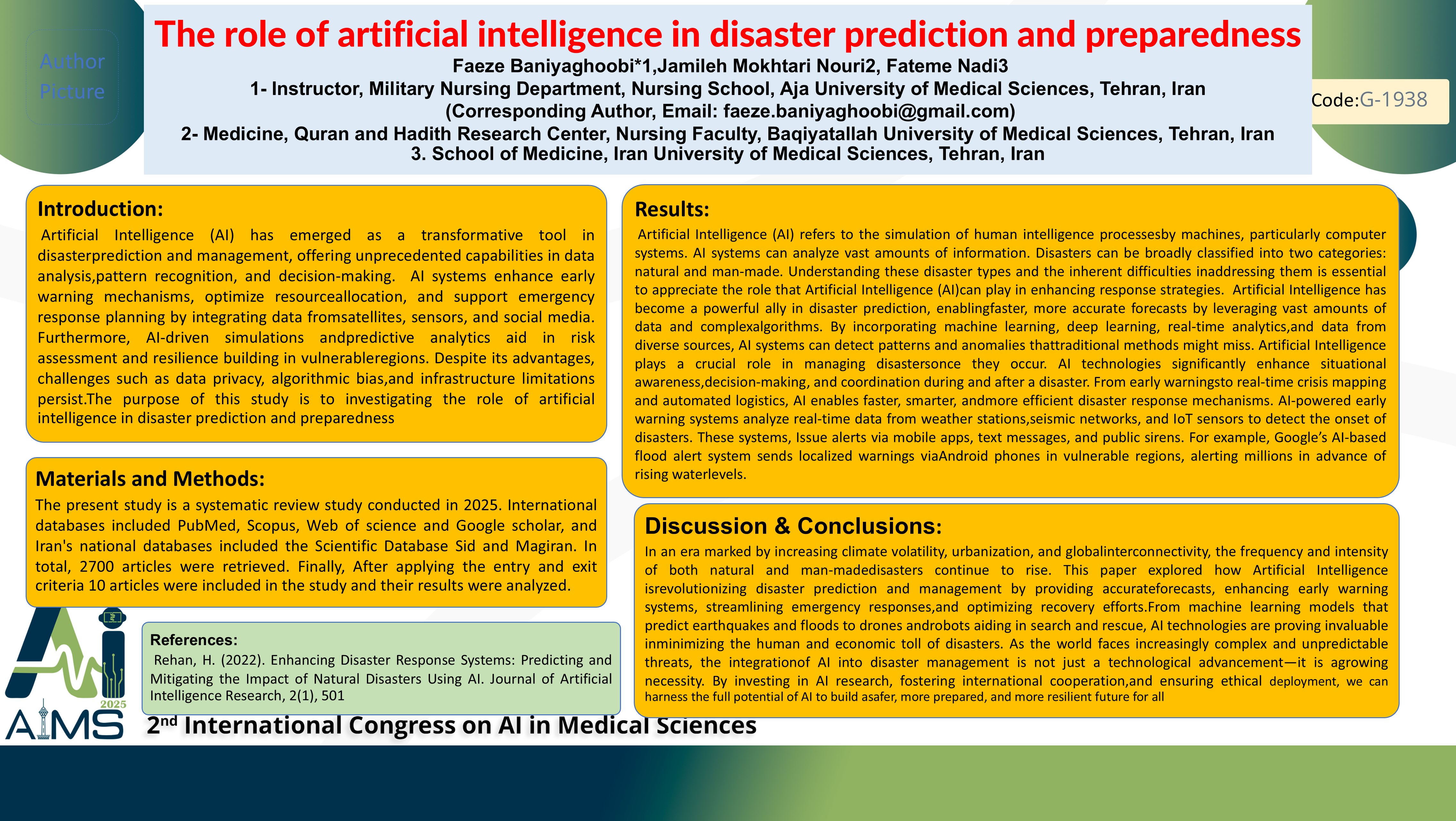The role of artificial intelligence in disaster prediction and preparedness
Code: G-1938
Authors: Faeze Baniyaghoobi *, Jamileh Mokhtari Nouri, Fateme Nadi ℗
Schedule: Not Scheduled!
Tag: Health Policy, Law & Management in AI
Download: Download Poster
Abstract:
Abstract
Introduction and Objective: Artificial Intelligence (AI) has emerged as a transformative tool in disasterprediction and management, offering unprecedented capabilities in data analysis,pattern recognition, and decision-making. The purpose of this study is to investigating the role of artificial intelligence in disaster prediction and preparedness Materials and Methods: The present study is a systematic review study conducted in 2025. International databases included PubMed, Scopus, Web of science and Google scholar, and Iran's national databases included the Scientific Database Sid and Magiran. In total, 2700 articles were retrieved. Finally, After applying the entry and exit criteria 10 articles were included in the study and their results were analyzed. Results: Artificial Intelligence has become a powerful ally in disaster prediction, enablingfaster, more accurate forecasts by leveraging vast amounts of data and complexalgorithms. By incorporating machine learning, deep learning, real-time analytics,and data from diverse sources, AI systems can detect patterns and anomalies thattraditional methods might miss. Artificial Intelligence plays a crucial role in managing disastersonce they occur. AI technologies significantly enhance situational awareness,decision-making, and coordination during and after a disaster. From early warningsto real-time crisis mapping and automated logistics, AI enables faster, smarter, andmore efficient disaster response mechanisms. AI-powered early warning systems analyze real-time data from weather stations,seismic networks, and IoT sensors to detect the onset of disasters. These systems, Issue alerts via mobile apps, text messages, and public sirens. For example, Google’s AI-based flood alert system sends localized warnings viaAndroid phones in vulnerable regions, alerting millions in advance of rising waterlevels. Discussion and Conclusion:This paper explored how Artificial Intelligence isrevolutionizing disaster prediction and management by providing accurateforecasts, enhancing early warning systems, streamlining emergency responses,and optimizing recovery efforts.From machine learning models that predict earthquakes and floods to drones androbots aiding in search and rescue, AI technologies are proving invaluable inminimizing the human and economic toll of disasters. As the world faces increasingly complex and unpredictable threats, the integrationof AI into disaster management is not just a technological advancement—it is agrowing necessity.
Keywords
Artificial Intelligence, Disaster Prediction, Emergency Management
